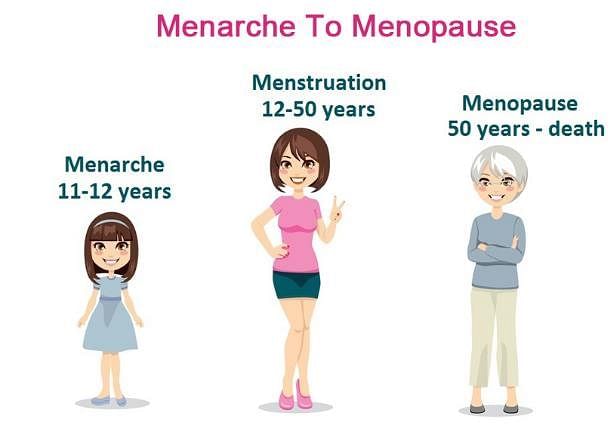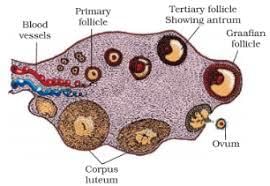Test: Human Reproduction - NEET MCQ
25 Questions MCQ Test - Test: Human Reproduction
Each testes has about 250 compartments called as _________.
Leydig cells are present outside the _________called______________containing small vessels.
The number of polar bodies formed during oogenesis (if first polar divides) in human being is:
Which of the following hormone is produced in female only during pregnancy?
Ovulation occurs on about_________ day of menstrual cycle.
The cellular layer that disintegrates and regenerates again and again is _______.
During which month of pregnancy the first movement of fetus is observed?
What structure gets implanted on the wall of the uterus during embryonic development?

The figure below shows the development of follicles (A, B, C, D). Select the option giving correct identification together with its function?

Hormone responsible for milk ejection after the birth of baby is:
The yellowish coloured milk secreted from the breast shortly after birth of the baby is called?
Which of the following hormones are secreted by the placenta?
A. Human chorionic gonadotropin
B. Human placental lactogen
C. Estrogen
D. Progestogens
The correct sequence of spermatogenetic stages leading to the formation of sperms in a mature human testis is:
Which of the statements given above is/are correct?
i. Oogenesis is initiated during the embryonic development stage when oogonia are formed in the ovaries.
ii. A primary oocyte completes its first meiotic division before birth.
iii. The tertiary follicle develops a fluid-filled cavity known as the antrum.
iv. At puberty, approximately 100,000 primary follicles remain in each ovary.
Which of the statements given above is/are correct?
i. LH and FSH both reach peak levels around the 14th day of the menstrual cycle.
ii. The LH surge causes the degeneration of the corpus luteum.
iii. Progesterone secreted by the corpus luteum is essential for maintaining the endometrium.
iv. Menstruation occurs if fertilization does not take place, leading to the start of a new cycle.
Assertion (A): The male reproductive system includes the testes, which produce sperm and hormones.
Reason (R): The Leydig cells in the testes are responsible for the production of androgens, which are essential for sperm formation.
Assertion (A): Oogenesis results in the formation of a single ovum during each menstrual cycle.
Reason (R): The cyclical changes in the ovaries are influenced solely by the levels of ovarian hormones, without any involvement from pituitary hormones.





























